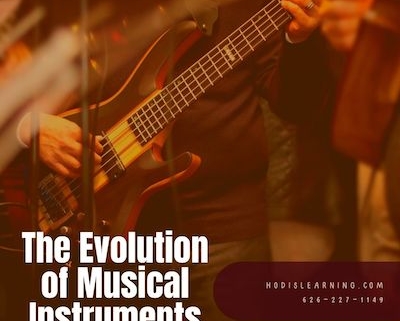The Evolution of Musical Instruments
Music has been an integral part of human culture for thousands of years, with musical instruments playing a crucial role in its development. The evolution of musical instruments reflects the ingenuity and creativity of humans as they sought to express themselves through sound. From rudimentary tools to sophisticated digital devices, the journey of musical instruments is a fascinating story of innovation and cultural exchange. Here’s a look at the evolution of musical instruments and their impact on music and society.
Early Beginnings
The earliest musical instruments were likely objects like sticks, stones, and animal bones and used to create rhythm and percussive sounds. Archaeological discoveries suggest that the first known musical instrument is the bone flute, dating back over 40,000 years. These primitive instruments were used in rituals and social gatherings, laying the foundation for the diverse world of music we know today.
Ancient Civilizations
As civilizations developed, so did the complexity of their musical instruments. Ancient Egyptians, Greeks, and Mesopotamians crafted instruments that were more sophisticated and varied. The Egyptians used harps, flutes, and percussion instruments in their religious ceremonies, while the Greeks developed the lyre and the kithara, predecessors to modern stringed instruments. The Greeks also introduced theoretical foundations for music, influencing Western musical thought for centuries.
The Middle Ages and Renaissance
The Middle Ages saw the rise of the medieval lute, the ancestor of the modern guitar, and the development of early keyboard instruments like the clavichord and harpsichord. Music became more structured, with the Church playing a significant role in its dissemination and performance. During the Renaissance, the invention of the printing press revolutionized music by allowing for the wide distribution of musical scores, making music more accessible to the public.
The Baroque and Classical Periods
The Baroque period (1600-1750) brought about significant advancements in instrument design and construction. The violin family, including the viola, cello, and double bass, became prominent, and the development of the modern orchestra began. The harpsichord was replaced by the pianoforte (piano), which allowed for greater dynamic expression in music.
During the Classical period (1750-1820), composers like Mozart and Beethoven pushed the boundaries of musical composition, leading to further refinements in instrument design. The piano became the centerpiece of the musical world, and woodwind instruments like the clarinet and flute saw significant improvements.
The Romantic Period
The Romantic period (1820-1900) was characterized by emotional expression and expanded orchestras. Instrument makers experimented with new materials and technologies, leading to the development of valves for brass instruments and the Boehm system for woodwinds, which improved their playability and range. This period also saw the rise of virtuoso performers who showcased the technical capabilities of their instruments.
The 20th Century and Beyond
The 20th century witnessed a dramatic transformation in musical instruments with the advent of electronic technology. The invention of the theremin, synthesizer, and electric guitar opened new avenues for musical exploration. Digital technology further revolutionized music production, allowing for the creation of complex sounds and compositions through computer software.
Takeaways
The evolution of musical instruments is a testament to human creativity and the desire to push the boundaries of artistic expression. From ancient bone flutes to modern synthesizers, each advancement has contributed to the rich tapestry of music. For students newly discovering music, exploring the history of musical instruments can provide valuable insights into the interplay between culture, technology, and art. Encouraging students to learn about and experiment with different instruments can deepen their appreciation for music and inspire their own creative journeys.
Hodis Learning & Music’s expert music teachers each teach several instruments, which offers students various approaches to music through different instruments and their respective traditions. Learn more about our music lessons program by calling or emailing us today!



